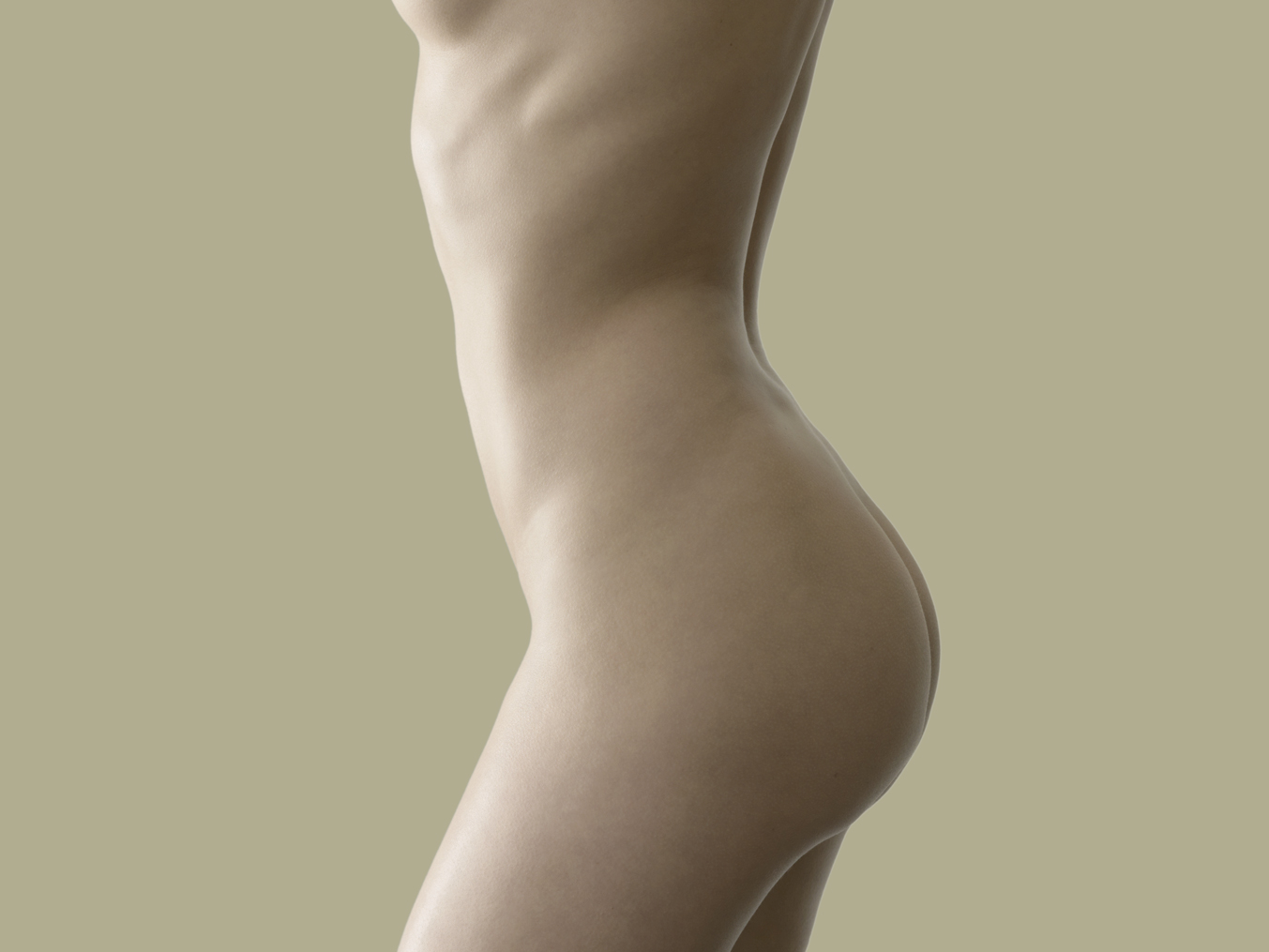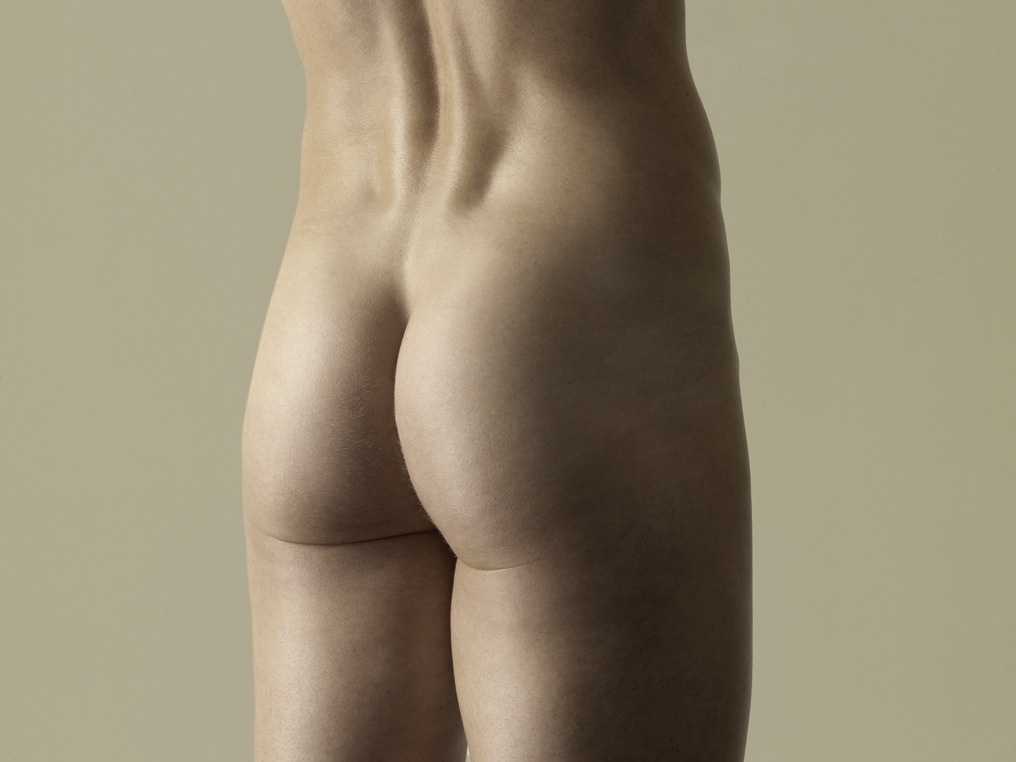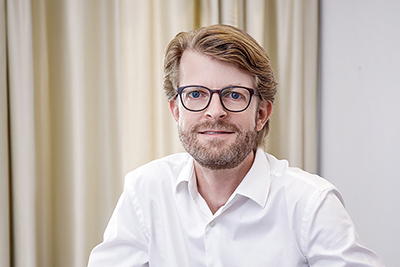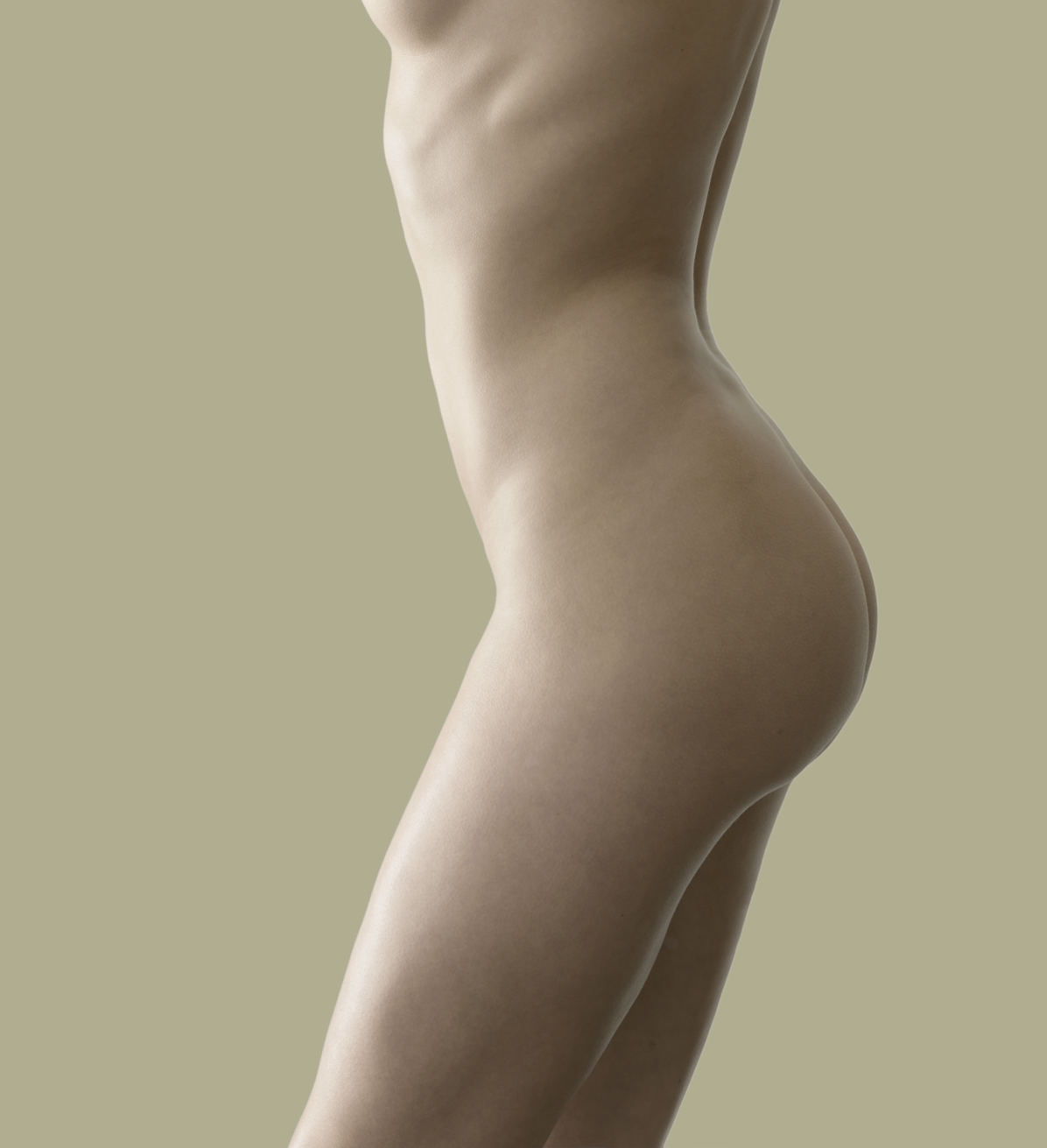
Lipomodelling or lipocontouring involves improving the contour of the body using the body’s own fat tissue. In the past, body contouring surgery primarily involved the removal of excess fat by liposuction (liposuction) and skin tightening operations (dermolipectomy). These methods still have their value, but can be enhanced by injecting the adipose tissue obtained during liposuction (lipofilling). In this way, areas with an excess of fat (fat deposit) can be seamlessly merged with areas where fat is deficient (fat atrophy), thus achieving a natural and harmonious body contour.
Autologous fat injection (syn. lipofilling, autologous fat transplantation or autologous fat transfer) has a wide range of applications in aesthetic surgery. Possible areas for lipoaugmentation in women are breast, buttocks and calves. The autologous fat injection is a relatively safe procedure that can achieve natural and long-lasting results and can be combined with other methods, foremost liposuction but sometimes also skin tightening operations (e.g. lipoabdominoplasty) and implants (e.g. gluteoplasty). In addition to ‘volumising’, the use of adipose tissue appears to have a positive effect on skin quality in the treated areas and can therefore also be used for scar treatment.
Additionally, autologous fat tissue can be used to moderately increase breast size, thus avoiding the disadvantages of having breast implants. However there is currently limited experience for long-term success or the long-term effect of injected fat on breast tissue. Therefore, autologous fat augmentation (lipoaugmentation) in breasts is currently limited and only recommended in selected cases. More information can be found under ‘breast augmentation with autologous fat transfer’.
Lipomodelling involves collecting fatty tissue from areas of the body with excess fatty tissue and, after special preparation or purification by various methods (e.g. sedimentation, centrifugation), subsequently injecting it with fine cannulas in regions where there is a fat deficit. In this case, liposuction is used for the extraction of fat, as well as to improve the body shape and contour. Repeated treatments may be useful in order to achieve an optimal result.

Considerations
When to consider lipomodelling:
- You would like to improve the contour of certain parts of your body.
- You suffer from an excess of fatty tissue in certain areas of the body (tummy, hips, thighs) and a volume deficit in other parts (breast, buttocks, calves).
- Fatty deposits are disproportionally distributed in some areas of your body and cannot be removed by diet and exercise (diet resistant fat).
- You suffer from dimples in your skin from having had liposuction.
- You are unhappy with the delicate skin and visible veins on your hands.
- You suffer from scar tissue caused by surgery or accidents.
Patients should be in good health. Any bleeding disorder or tendency for increased or prolonged swelling should be communicated to the surgeon in order to be able to weigh up risks versus benefits. Each person’s anatomy and proportions are unique and the decision to undergo lipomodelling depends on each individual and their goals.
During the aging process, the amount and distribution of adipose tissue changes on the body in different ways. Fat subsides under the forces of gravity, increases in certain areas and diminishes in other areas. Using lipomodelling, fat tissue in areas of excess is removed by liposuction and is used either alone or in combination with other measures to replace lost volume in areas of fat depletion in order to achieve harmonious body contours and proportions.
In the hands, age-related thinning of the subcutaneous tissue can lead to increased visibility of veins. Under these circumstances, lipomodelling can improve hand contour and camouflage veins.
The quality of scars following surgery or accidents may be improved by the lipofilling by means that exceed the ‘volumising’ effect of the own body’s fat tissue.
Consultation
A prerequisite for a successful operation is careful planning. This begins with a personal consultation in the AARE KLINIK.
- Communication of wishes and expectations ascertain what you would like to improve.
- Explanation of the possibilities, scope and limitations of the operation.
Examination:
- Medical history is taken.
- Physical examination is performed.
- Digital photos are taken.
- The regions where there are excess fat deposits and volume deficits are identified.
- Thickness, texture and elasticity of skin is tested.
- Based on this an individual treatment plan is drawn up and goals of the operation are discussed and defined.
- Sometimes autologous fat injections is only one aspect of an overall treatment concept, for example as part of a lipoabdominoplasty or gluteoplasty.
- It often makes sense to combine several treatment methods to achieve the best possible result.
- A joint individual treatment plan is set up, including all important aspects of the operation, such as where liposuction and lipofilling will be performed.
- Risks and complications are discussed.
- Agreed treatment is documented on a planning sheet.
To plan the operation and to make a risk assessment we require:
- Full medical history (pre-existing conditions and previous surgery).
- Current diseases (high blood pressure, diabetes, thyroid dysfunction).
- Allergies or aversion to medications.
- Any important medical reports.
- Please bring any important medical information along to the consultation.
- If you are planning to lose a significant amount of weight in the foreseeable future, this should be considered when planning surgery, since this can significantly alter the outcome. Therefore, it is usually wise to wait for the stabilisation of your weight before having lipomodelling.
Procedure
The basis of the liposuction is the removal of adipose tissue via suction cannulas, which are passed through the tissue. These are usually connected to a pump that produces the negative pressure required for this purpose; therefore this technique is referred to as suction assisted lipectomy (SAL). In lipomodelling the adipose tissue is, at least partly, injected into other regions (lipofilling). Thus, gentle techniques using special atraumatic cannulas have to be used that do not destroy the fat cells. The following stage involves the preparation of fatty tissue obtained for injection. For this purpose, the tissue is purified by various methods, such as rinsing, centrifugation, and sedimentation. Blood and tissue components are removed, as these can impede fat injection and negatively affect the outcome. The result is a largely homogeneous tissue gel, composed of fine fat droplets that can be injected into the desired regions with fine cannulas. The cannulas are passed through the tissue in many passages for uniform distribution of small fat droplets in order to ensure optimal healing. After injection, the tissue can be contoured by light massage. Through the selective combination of liposuction and lipofilling, the body is shaped in the desired areas. Depending on the injected regions post-treatment is performed with special bandages and compression garments.
Lipomodelling is usually performed under local anaesthesia with sedation (‘twilight anaesthesia’) or general aesthesia as an outpatient procedure at the AARE KLINIK or as part of a short hospital stay. The length of surgery is variable and depends on the extent of lipomodelling.
Risks
The injection or transplantation of one’s own (autologous) fat tissue is a widely used treatment that enjoys increasing popularity. Autologous fat tissue is an ideal filler in many regions of the body as it is safe and does not carry the risk of foreign materials, like collagen, hyaluronic acid, or silicone. Adipose tissue transfer is able to produce natural, long-lasting results and is suitable for body contouring, volume enhancement, filling of defects, skin rejuvenation, or the improvement of scars. An important aspect of using the body’s own fat is the good compatibility and the avoidance of complications, such as may occur when using other animal or human fillers, or artificial implants.
Liposuction and autologous fat injection (lipofilling) are among the most common surgeries performed by plastic surgeons. But, like any surgical procedure, they also involve risks.
Swelling and bruising are the most common side effects of lipomodelling, but resolve within 2–3 weeks. Numbness of the skin in the treatment area may occasionally occur, but is usually temporary. Slight asymmetry or irregularities will usually correct spontaneously once the swelling subsides. Due to the partial degradation of injected fat cells (30–70%) the desired volume may not be achieved with one fat transfer and further treatments may be required for an optimal result. The healing rate of adipose tissue depends on the blood supply in the recipient region. Scars have a reduced vascularity. Thus, the take of injected fat cells in scar tissue is limited. Infections are rare, but pose a serious complication that can result in total loss of the injected fat, scarring or the creation of dimples in the skin, which might require surgery.
The risk of severe complications is increased in patients who smoke or who have circulatory disorders of the skin or chronic diseases, such as diabetes. In rare cases, a further operations might be required if there are irregularities or indentations.
Every patient should be informed of all the benefits, risks and possible complications involved.
General risks from lipomodelling include:
- Haematoma (bruising), bleeding and swelling
- Seroma (accumulation of wound fluid)
- Healing problems or infection
- Injury of nerves or vessels
- Numbness in area of operation (temporary or permanent)
- Circulatory problem of the skin (skin slough)
- Scars
- Slight asymmetry
- Unsatisfactory aesthetic result
- Secondary surgery
- Thrombosis or embolism
Overall lipomodelling is a safe procedure when undertaken by an experienced plastic surgeon and patients are mostly satisfied with the results. You can help to minimise the risks by following the advice of your surgeon.
Preparation
Our aim is to make the time before and after your surgery as comfortable as possible. By following a few tips you can support our care:
- To aid the healing process, avoid smoking for two weeks before and after the operation.
- Avoid medication that increases the risk of bleeding, like aspirin, non-steroidal anti-inflammatory drugs, as well as vitamins and homeopathic remedies for two weeks prior to the operation.
- Lipomodelling is generally performed as an outpatient procedure.
- Depending on the location and extent of liposuction and autologous fat injection, the surgery is performed under local anaesthesia, possibly with sedation (twilight anaesthesia), or in general anaesthesia.
- Make sure that you can be collected and cared for by someone for 24 hours after the procedure.
Day of surgery
In most cases, lipomodelling is performed as an outpatient procedure or with an over-night stay at the AARE KLINIK. In individual cases, when necessary, the procedure can be undertaken in an affiliated private hospital.
- During surgery you will receive various medications for your wellbeing.
- For your safety, your heart rate, blood pressure, oxygen supply etc. are monitored during the operation.
- Compression garments are applied at the end of surgery to aid healing, reduce swelling and promote uniform skin contraction.
- After the operation, you will be taken to the recovery room, where you will have continued monitoring until you awaken and are able to get up.
- You will be allowed to return home after a few hours.
- If you are an inpatient, you will remain in hospital under surveillance until the following day.
- Already on the day of the surgery you should get up regularly for a few minutes in order to minimise the risk of thrombosis.
- The level of pain after a lipomodelling is usually not severe and can be compared with muscle soreness.
- You are advised to take mild pain relief that reduces swelling and should be continued for several days after surgery.
- In case of an ambulatory procedure, you should have someone to care for you continuously for 24 hours postoperative.
- You will receive all the necessary instructions for your aftercare from us.
- We also provide the option of an over-night inpatient stay at the AARE KLINIK in a single room with a personal nurse care, if needed.
After surgery
- It is important to realise that recovery from an operation varies for every individual.
- You should rest in the first days after surgery.
- Try and keep the treated regions in an elevated position (arms, legs).
- In the first 2–5 days after the procedure, a feeling of tension and lighter pain can occur.
- Only take prescribed painkillers and avoid any medication that contains aspirin or other blood-thinning substances.
- Wear the customised compression garments continuously day and night. Notify us if they are too tight or there are any other problems.
- Slight swelling and bruising in the area of surgery usually subsides within 2–3 weeks.
- Typically you will be back on your feet a couple of days after surgery and be able to resume your daily activities.
- Bandages and possibly drains are removed in the first days after the operation, after which you can take showers again.
- Full baths and excessive heat (e.g. sauna), however should be avoided for several weeks until swelling has receded.
- Non-dissolvable sutures are removed after one week.
- Compression garments should be worn for a total of 4–6 weeks.
- Physically demanding activities and sport should be avoided for several weeks.
- After surgery you will be examined at the AARE KLINIK at regular intervals, so
Outcome
- Swelling and bruising may remain for some time after surgery.
- The healing process is gradual and it takes several months before the final result can be conclusively determined.
- Small scars might be red or appear darker pigmented for several months, but this colour will fade with time until they are barely visible.
- Swollen (hypertrophic) scars may require treatment with special silicone pads and cortisone injections.
- Lipomodelling improves body shape and can enhance the contours of the body. Patients often feel more self-confident and find it easier to wear certain clothes.
- The result of lipomodelling is usually long-lasting.
- However, only a portion of the injected fat cells heals, while the rest (30–70%) degrades. In the first few months, this might result in a loss of volume, whereby the desired outcome may not be attained. This can be remedied by further treatments.
- Gravity, the aging process, weight fluctuations, pregnancy and lifestyle continue to affect the outcome over time.
- If you are unhappy after a few years, another lipomodelling can be performed.
Costs
Lipomodelling is undertaken in order to improve appearance, making it an aesthetic procedure, in which case the costs have to be carried by the patient.
The cost of lipomodelling vary significantly depending on the extend of the surgery and on where the procedure is performed (AARE KLINK or hospital). A more accurate cost estimate can therefore only be made after a personal consultation.
The overall costs are made up of:
- Surgical fee (including consultation and post-operative care)
- Anaesthesia fee
- Technical infrastructure costs (AARE KLINIK/hospital)
- Inpatient hospital costs
- Medication
- Compression garments
- Diagnostics (laboratory, ECG, scans, etc.)
Meet PD Dr. med. Oliver Scheufler

Dr. med. O. Scheufler, specialist in plastic, reconstructive and aesthetic medicine and author of this website, is pleased to be at your service for a personal consultation. Besides his main work at the Aare Clinic, PD. Dr. Scheufler is also scientifically active and has habilitated at the University Hospital of Basel. He was therefore awarded the title of assistant professor by the University of Basel. In addition, he was honored by Duke University (USA) as a Visiting Professor. So do not hesitate to contact him if you wish a professional consultation!



